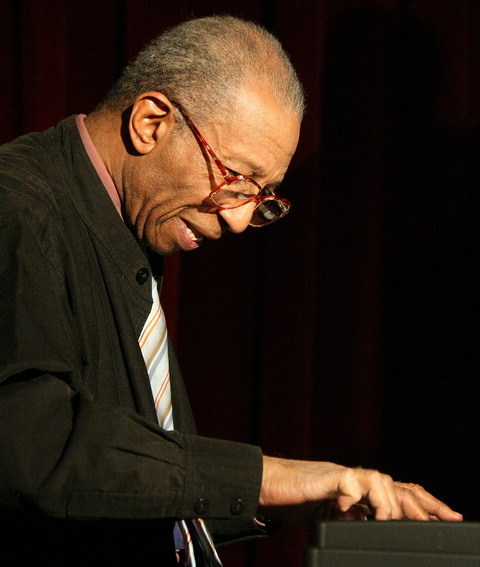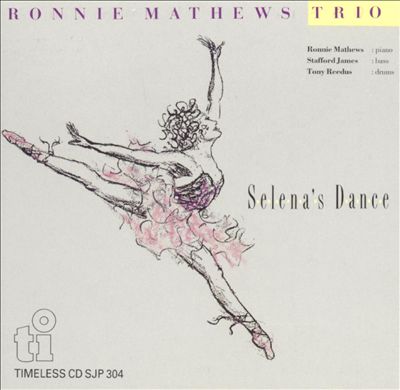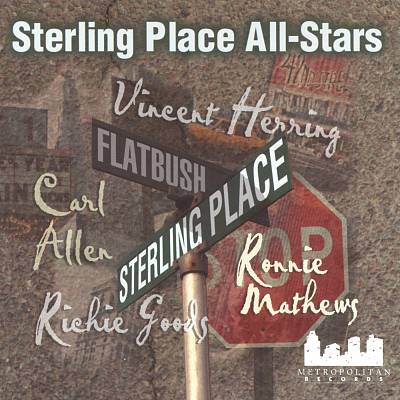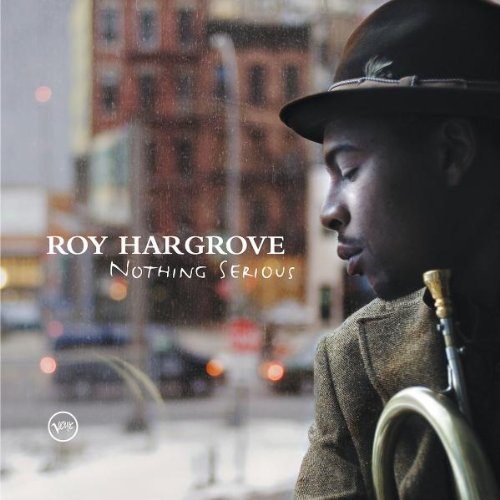Salima's Dance – Ronnie Mathews
Named for Ronnie's daughter and her love of dancing, this is a simple, blues-like song with an even-8ths 3/4 groove. Transcriptions are available of Ronnie's solo piano intros on both recordings, plus his Solo Piano Arrangement.
- Recording: Ronnie Mathews - Selena's Dance
- Recorded on: February 1, 1988
- Label: Timeless (CDSJP 304)
- Concert Key: F minor
- Vocal Range: , to
- Style: 3/4 even 8ths (African feel)
- Piano - Ronnie Mathews
- Bass - Stafford James
- Drums - Tony Reedus
Video
- Description
- Historical Notes
- Solos
- Piano Corner
- Bass Corner
- Drum Corner
- Guitar Corner
- Inside & Beyond
- Minus You
In performance, Ronnie would always set the tempo and establish the groove himself (solo piano) for eight measures before the rest of the rhythm section came in. This groove, the "African feel," is an even-eighths 3/4 with emphasis on the dotted quarter-note, making it almost like 6/8. The best-known example of this is Afro Blue, as recorded by John Coltrane. It should be noted that the original West African rhythms that this groove comes from are interpreted with measures twice as long, variously as the equivalents of 12/8, 6/4 or a long-meter 3/2.
Pianists should use the Solo Piano Arrangement, whether or not they are playing unaccompanied; these voicings work in an ensemble setting as well. See the Piano Corner tab for details.
The Drum Shout Chorus is a simple riff, voiced again with fourths and seconds. Measures 7 and 8 have more open voicings. Basically the same on all versions.
Related Songs
Email Send Salima's Dance to a friend
- Recording: Sterling Place All Stars - Sterling Place All Stars
- Recorded on: July 7 & 8, 1998
- Label: Metropolitan (MR 1117)
- Concert Key: F minor
- Vocal Range: , to
- Style: 3/4 even 8ths (African feel)
- Alto Sax - Vincent Herring
- Piano - Ronnie Mathews
- Bass - Richie Goods
- Drums - Carl Allen
Video
- Description
- Historical Notes
- Solos
- Piano Corner
- Bass Corner
- Drum Corner
- Guitar Corner
- Inside & Beyond
- Minus You
Pianists should use the Solo Piano Arrangement, whether or not they are playing unaccompanied; these voicings work in an ensemble setting as well. See the Piano Corner tab for details.
This was the only recording that Ronnie did with either Vincent Herring or Richie Goods. He had recorded previously with Carl Allen in 1991 for three songs on Benny Powell's album "Why Don't You Say "Yes" Sometime?" Vincent, Richie and Carl had all played on Vincent's 1997 album "Change the World."
For another song from this album, check out John Charles.
On this recording, Ronnie plays a 16-measure intro clip. The bass and drums come in after eight measures. His right hand voicings combine fourths and seconds, while the left hand alternates between low fifths and higher stacks of fourths; there is a lot of independence between the two hands.
The Drum Shout Chorus clip is a simple riff, voiced again with fourths and seconds. Measures 7 and 8 have more open voicings. Basically the same on all versions.
Solo Piano Arrangement: Ronnie's solo piano arrangement is similar to his interpretation of the melody on this trio recording. The longer notes of the melody are voiced mostly in fourths, or combinations of fourths and seconds. The right hand voicings at B contain all the chord extensions. The left hand is mostly supplying a sort of drone with the root and 5th.
Related Songs
Email Send Salima's Dance to a friend
- Recording: Roy Hargrove - Nothing Serious
- Recorded on: September, 2005
- Label: Verve (621102)
- Concert Key: F minor
- Vocal Range: , to
- Style: 3/4 even 8ths (African feel)
- Trumpet - Roy Hargrove
- Trombone - Slide Hampton
- Alto Sax - Justin Robinson
- Piano - Ronnie Mathews
- Bass - Dwayne Burno
- Drums - Willie Jones, III
Video
- Description
- Historical Notes
- Solos
- Piano Corner
- Bass Corner
- Drum Corner
- Guitar Corner
- Inside & Beyond
- Minus You
Pianists should use the Solo Piano Arrangement, whether or not they are playing unaccompanied; these voicings work in an ensemble setting as well. See the Piano Corner tab for details.
Ronnie's intro on this version clip begins rubato, almost establishing a slow tempo followed by a slightly faster one. In the first part of the intro he plays two-handed voicings in fourths, while the second part introduces staccato rhythmic figures in the right hand over a left hand ostinato. After this he sets up the tempo, with fourths in both hands, and the bass and drums come in together as on the Sterling Place All-Stars recording.
The Drum Shout Chorus clip is a simple riff, voiced again with fourths and seconds. Measures 7 and 8 have more open voicings. Basically the same on all recordings.
Solo Piano Arrangement: Ronnie's solo piano arrangement is similar to his interpretation of the melody on this trio recording. The longer notes of the melody are voiced mostly in fourths, or combinations of fourths and seconds. The right hand voicings at B contain all the chord extensions. The left hand is mostly supplying a sort of drone with the root and 5th.
Related Songs
Email Send Salima's Dance to a friend

Ronnie Mathews
December 2, 1935 – June 28, 2008
Ronnie Mathews was born in Brooklyn, NY. He studied at Brooklyn College, and also with pianist/composer/arranger Hall Overton starting in 1953, then continuing his music education at Manhattan School Of Music from 1955-1958. He played with Gloria Lynne (1958-1960) and started his small group jazz recording career with Charles Persip And The Jazz Statesmen for Bethlehem records on April 2, 1960. He also performed with Kenny Dorham in 1960 and 1961, as well as recording in 1961 on sessions with leaders Clifford Jordan (February 14), Roland Alexander (June 17), his own trio session for Savoy (June 19, unissued), Bill Hardman (October 18), and Junior Cook (December 4). Read more...



